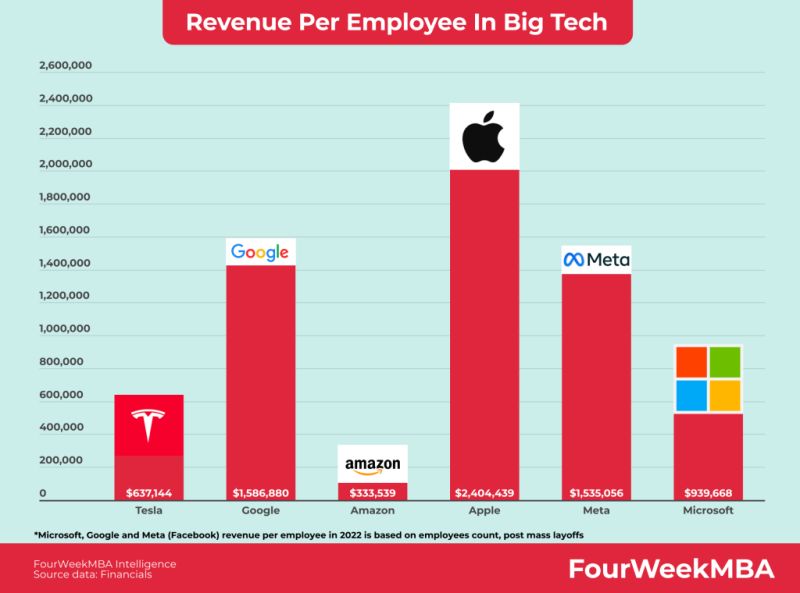Apple’s Secret To Minimal Layoffs is it’s robust Revenue per Employee.
Recently, Amazon laid off 27,000, Meta laid off 21,000, Microsoft laid off 10,000, and Google laid off 10,000 workers.
Per Bloomberg, Apple just announced a small layoff yesterday (April 4th). Have you ever wondered why layoffs are almost non-existent at Apple?
The answer lies in Revenue Per Employee metric.
📌 Apple’s revenue per employee is a staggering $2.4 million!
📌 This figure is significantly higher than other tech giants like Amazon ($0.33 million), Google ($1.58 million), Meta ($1.53 million), and Microsoft ($0.93 million). This means Apple has superior margins than these businesses.
📌 Apple’s high margin, and high revenue per employee provides better cushion for the company to weather the storm and retain top talent despite the current macro environment.
Bonus: Apple has a flatter org structure to focus on innovation, efficiency, and productivity, and this makes each employee’s role vital to the company’s success.
Summary: Apple’s impressive business performance safeguards its workforce from layoffs, ensuring stability and commitment to innovation.
What are your thoughts? What can other companies learn from Apple’s approach to employee stability? Share your thoughts below!

